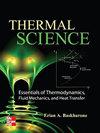线性调频红外热成像检测GFRP/PMI泡沫夹层结构缺陷技术
IF 1.1
4区 工程技术
Q4 THERMODYNAMICS
引用次数: 0
摘要
PMI泡沫夹层结构作为复合材料的重要结构之一,在制造和使用过程中容易出现脱粘和分层缺陷,严重影响材料的力学性能。因此,有必要对泡沫夹层结构的缺陷进行检测。建立线性调频红外热波无损检测系统,研究缺陷几何特征(直径、深度)与表面温度信号的相关性及其对检测效果的影响。通过主成分分析、离散傅里叶变换、热波信号重构等算法对图像序列进行处理。研究表明:缺陷直径越大,深度越浅,容易检测到缺陷,检测效果好。该检测系统能够有效地检测和识别脱粘和分层缺陷。热波信号重构方法在信噪比(SNR)指标上优于主成分分析法和离散傅立叶变换方法,提高了图像质量,有利于有效识别图像表面缺陷信息。本文章由计算机程序翻译,如有差异,请以英文原文为准。
Linear frequency modulation infrared thermal imaging detection technology for GFRP/PMI foam sandwich structure defects
As one of the important structures of composite materials, PMI foam sandwich structure is prone to debonding and delamination defects during manufacturing and service, which seriously affects the mechanical properties of materials. Therefore, it is necessary to detect the defects of foam sandwich structure. A linear frequency modulation (LFM) infrared thermal wave nondestructive testing system was built to study the correlation between the geometric characteristics (diameter and depth) of the defect and the surface temperature signal and its influence on the detection effect. The image sequence is processed by principal component analysis, discrete Fourier transform, thermal wave signal reconstruction and other algorithms. Studies have shown that: the larger the defect diameter, the shallower the depth, easy to detect defects, detection effect is good. The detection system can effectively detect and identify debonding and delamination defects. The thermal wave signal reconstruction method is superior to the principal component analysis method and the discrete Fourier transform method in the signal-to-noise ratio (SNR)index, which improves the quality of the image and is conducive to the effective identification of the image surface defect information.
求助全文
通过发布文献求助,成功后即可免费获取论文全文。
去求助
来源期刊

Thermal Science
工程技术-热力学
CiteScore
2.70
自引率
29.40%
发文量
399
审稿时长
5 months
期刊介绍:
The main aims of Thermal Science
to publish papers giving results of the fundamental and applied research in different, but closely connected fields:
fluid mechanics (mainly turbulent flows), heat transfer, mass transfer, combustion and chemical processes
in single, and specifically in multi-phase and multi-component flows
in high-temperature chemically reacting flows
processes present in thermal engineering, energy generating or consuming equipment, process and chemical engineering equipment and devices, ecological engineering,
The important characteristic of the journal is the orientation to the fundamental results of the investigations of different physical and chemical processes, always jointly present in real conditions, and their mutual influence. To publish papers written by experts from different fields: mechanical engineering, chemical engineering, fluid dynamics, thermodynamics and related fields. To inform international scientific community about the recent, and most prominent fundamental results achieved in the South-East European region, and particularly in Serbia, and - vice versa - to inform the scientific community from South-East European Region about recent fundamental and applied scientific achievements in developed countries, serving as a basis for technology development. To achieve international standards of the published papers, by the engagement of experts from different countries in the International Advisory board.
 求助内容:
求助内容: 应助结果提醒方式:
应助结果提醒方式:


